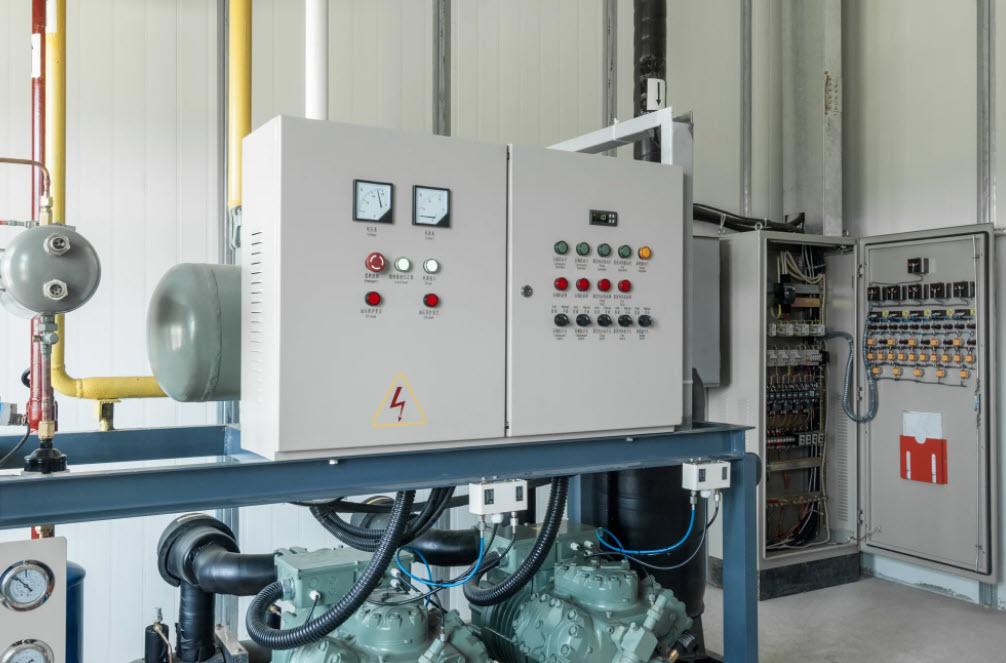PLC and VFD are vital components of industrial control panels, playing a crucial role in modern automation and control systems. These two technologies, Programmable Logic Controllers (PLC) and Variable Frequency Drives (VFD), work together to improve efficiency, reduce costs, and enhance productivity in industrial processes. This article will explore how PLCs and VFDs function, their benefits, and why they are integral to industrial control panels.
What Are PLC and VFD?
To understand their importance, let's break down each technology.
Programmable Logic Controllers (PLC)
PLCs are robust and adaptable computers designed to manage and automate industrial processes. These devices monitor inputs, process data, and generate outputs based on a pre-programmed logic. They are primarily used to control equipment such as conveyor belts, robotic arms, and production lines. Their flexibility allows engineers to modify processes without overhauling the entire system.
Variable Frequency Drives (VFD)
VFDs are electronic devices that regulate the speed and torque of electric motors by controlling the frequency and voltage of the power supplied. By adjusting these parameters, VFDs improve efficiency, prolong motor life, and help save energy. They are essential in applications where precise motor control is required, such as HVAC systems, pumps, and elevators.
When PLCs and VFDs are integrated into industrial control panels, they create intelligent systems that adapt to real-time conditions, optimizing operations while minimizing energy consumption.
Benefits of Using PLC and VFD in Industrial Control Panels
The combination of PLCs and VFDs in industrial control panels provides numerous advantages for manufacturers and facility operators. Here are some of the key benefits:
1. Enhanced Energy Efficiency
VFDs allow motor-driven systems to operate at the exact speed required for a particular process. By eliminating unnecessary motor runs at full speed, businesses can achieve significant energy savings over time.
2. Improved Process Control
PLCs offer precise control and decision-making capabilities, ensuring accuracy and consistency in industrial operations. When paired with VFDs, they provide seamless motor control, even under changing loads or process conditions.
3. Reduced Equipment Wear and Tear
Soft starts and controlled deceleration, made possible by VFDs, minimize mechanical stress on motors and connected equipment. This helps companies avoid frequent breakdowns and extends the lifespan of their equipment.
4. Greater Flexibility and Scalability
One of the standout advantages of PLCs is their adaptability. They can be customized for any industrial process, whether simple or complex. Similarly, VFDs are versatile and can be used across various applications, making them a scalable solution for businesses as they grow.
5. Cost Savings
The energy efficiency achieved through VFDs and the reduced maintenance costs from PLCs lead to a lower total cost of ownership for industrial control systems.
How PLCs and VFDs Work Together in Industrial Control Panels
The integration of PLCs and VFDs in industrial control panels creates systems that can manage automation tasks and adjust motor speed simultaneously. For example, a PLC can detect variations in production demand through sensors and input devices. Based on this data, it sends commands to a VFD to increase or decrease motor speed as necessary. This real-time interaction ensures that processes remain efficient and economical.
Furthermore, PLCs enable remote monitoring and diagnostics, allowing operators to troubleshoot issues without needing to physically inspect the machinery. This capability minimizes downtime and improves operational reliability.
Applications of PLC and VFD in Industrial Control Panels
The versatility of PLCs and VFDs means they are used in a wide range of industries. Some common applications include:
- Manufacturing: Used to control robotics, assembly lines, and packaging systems.
- HVAC: Regulate air handling units and fans for optimized climate control.
- Water and Wastewater: Control pumps and motors for efficient water treatment processes.
- Energy Sector: Manage wind turbines, solar inverters, and coal-handling plants.
- Food and Beverage: Implement automated filling, sorting, and packaging systems.
Choosing the Right Industrial Control Solutions
Finding the right industrial control solutions for your facility depends on various factors, such as the complexity of operations, budget, and specific industry requirements. Working with experienced engineers and automation specialists can help you design a system that integrates PLCs and VFDs effectively.
Additionally, consider the latest advancements in control panel technology, including IoT-enabled PLCs and energy-efficient VFDs. These innovations can further enhance system performance and enable predictive maintenance through data analytics.
Learn More About Industrial Control Panels
To explore expert-designed industrial control panels, including advanced systems with integrated PLCs and VFDs, click here. Collaborate with professionals who understand your unique needs and can deliver tailored solutions to keep your operations running smoothly.
Final Thoughts
PLCs and VFDs have transformed the way industries operate, providing smarter, more efficient solutions for automation and motor control. When these technologies are seamlessly integrated into industrial control panels, they pave the way for significant improvements in productivity, energy efficiency, and operational flexibility.
Investing in the right industrial control solutions is not just a choice; it’s a necessity in today’s competitive landscape. Whether you're upgrading existing systems or building from scratch, consider how PLCs and VFDs can optimize your processes. With their proven benefits, they are a must-have for any facility seeking to stay ahead in automation and efficiency.
